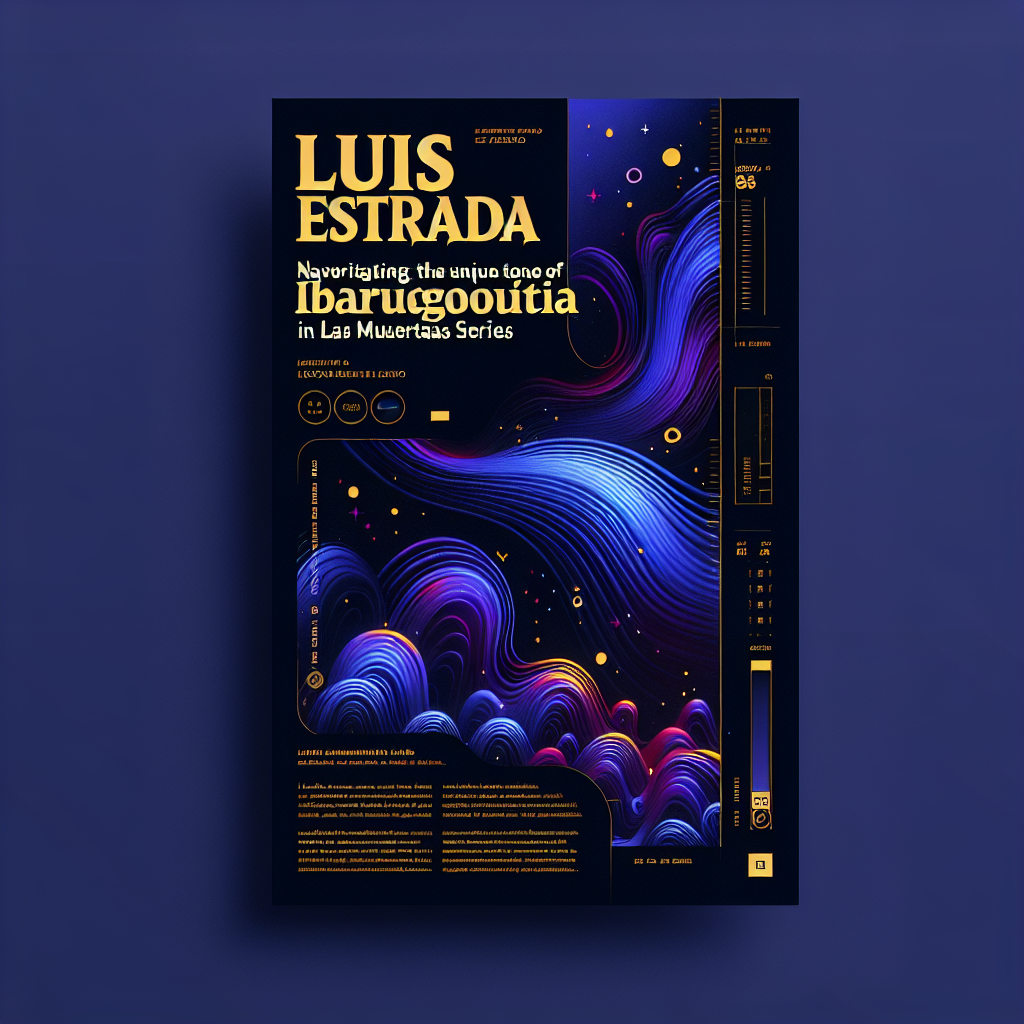Luis Estrada faces the significant challenge of maintaining the essence of Jorge Ibargüengoitia‘s narrative in his series Las muertas, set to premiere on Netflix on September 10. The director aims for authenticity in both the ethical and satirical dimensions, reflecting the depth of the original story, which centers around the notorious case known in Mexico as Las Poquianchis.
“The major challenge was to truly capture Jorge Ibargüengoitia’s tone. It’s a satire that carefully avoids lapsing into caricature or farce while remaining credible. Additionally, the structure allows for multiple voices, utilizing narratives, testimonies, and interviews. He skillfully combined these genres—some even journalistic—to create this story,” .
After 30 years, Estrada achieved his long-held dream to adapt Las muertas, driven by an obsession since reading the novel: “I always planned to make a film. But with Netflix, I found the ideal format. This expansive canvas of characters, locations, and events told by Ibargüengoitia lends itself to a narrative that deeply engages the viewer,” he elaborated.
The series is not a conventional production; it was filmed in a single unit, akin to a film, with each episode crafted with the attention of a short feature. Estrada directed all chapters, which were produced with meticulous craftsmanship. Completing six episodes in 21 weeks of filming involved a cast of 150 actors, over 5,000 extras, and the construction of 220 sets across various locations in Veracruz, San Luis Potosí, and Guanajuato, along with three studios at Estudios Churubusco.
Estrada’s trademark political satire permeates the series. All his works, including La Ley de Herodes, Un mundo maravilloso, El infierno, La dictadura perfecta, and ¡Qué viva México!, are featured in the Netflix catalog, and in Las muertas, both satire and political critique take center stage.
“I believe Jorge Ibargüengoitia successfully transforms a sordid historical event—the story of the Hernández Valenzuela sisters—into a narrative rich with ethical and moral implications. The central theme of Las muertas is essentially about malice. The characters, including the victims, assume roles akin to executioners when given the chance for revenge,” Estrada elucidated.
The plot revolves around the rise and fall of sisters Arcángela and Serafina Baladro, who established a lucrative network of brothels in 1960s Mexico. Following a series of deaths and the discovery of bodies, they are tagged as Mexico’s first female serial killers. Deeper issues, such as corruption and moral duplicity, are interwoven throughout the narrative.
Estrada remarked on Ibargüengoitia‘s access to court documents and various testimonies, stating, “I wanted to utilize the resources suggested in the novel to create a quasi-journalistic reconstruction of an event with enormous impact, given the scandal it caused. The transformation Jorge achieved isn’t merely a collection of viewpoints—it’s about how to treat these perspectives to maintain credibility.”
Las muertas unfolds like an extensive report or documentary, embodying the characteristics of true crime while remaining fictional. This balance between extravagant storytelling and authenticity resonates, encapsulating the adage, “sometimes reality surpasses imagination.”
The series further develops the universe crafted by the Guanajuato-born author, using fictionalized settings that expand on the original storyline while showcasing Estrada’s signature ironic tone and satire.
Estrada also emphasized the creative choice to intertwine testimonies and statements, finding it a pivotal cinematic device. He retained the chronological breaks found in the novel, noting, “It was important for those familiar with the book to recognize not just the story but also the narrative style, characters, and locations.”
Acknowledging a creative liberty was taken in the sixth chapter, Estrada stated, “There’s one bold move Jaime and I made, which is that the writing in chapter six isn’t by Ibargüengoitia; it’s mine and Jaime Sampietro’s. The challenge was that this book—a product of 13 years of work and four versions—had a somewhat abrupt ending. We aimed to do justice to the conclusion, making the sixth chapter akin to a film in itself, lasting over an hour without including credits, which are a visual surprise.”
Creating this project demanded an extraordinary effort. Estrada noted it consumed the most weeks of filming compared to any previous project. He remarked, “Each frame was handcrafted, along with each sound, sign, set, and decoration,” in stark contrast to other historical productions like Las muertas, which required no digital enhancements, relying instead on constructed sets to bring Ibargüengoitia‘s imaginative world to life.
To secure funding from Netflix, Estrada and his team prepared a comprehensive production dossier resembling an illustrated book of Las muertas, detailing plot, characters, production design, locations, and costumes. Their six-month research in archival sources set the foundation for bringing Las muertas to fruition over two years.
Besides serving as director, Estrada is also the showrunner. The screenplay was co-written by Luis Estrada, Jaime Sampietro, and Rodrigo Santos, with Estrada and Sandra Solares as executive producers. The cast includes Paulina Gaitán as Serafina Baladro; Arcelia Ramírez as Arcángela Baladro; Joaquín Cosío as Capitán Bedoya; Alfonso Herrera as Simón Corona; Mauricio Isaac as La Calavera; Leticia Huijara as Eulalia Baladro; Enrique Arreola as El Escalera; and Fernando Bonilla as Ticho.
The ensemble also features Enrique Arreola, Fernando Bonilla, Salvador Sánchez, Tenoch Huerta, Dagoberto Gama, Carlos Aragón, Elías Toscano, Ximena Romo, Adrián Vázquez, Yessica Borroto, José Sefami, Diego Jáuregui, Paloma Woolrich, Jorge Zárate, Sonia Couoh, Sofía Espinosa, Eligio Meléndez, Juan Carlos Remolina, Enoc Leaño, Marco Zetina, Edwarda Gurrola, Katia Rigoni, Patricia Loranca, and Cecilia de los Santos.
Persons: Luis Estrada, Jorge Ibargüengoitia, Aliana González, Paulina Gaitán, Arcelia Ramírez, Joaquín Cosío, Alfonso Herrera, Mauricio Isaac, Leticia Huijara, Enrique Arreola, Fernando Bonilla, Sandra Solares, Jaime Sampietro, Rodrigo Santos, Tenoch Huerta, Salvador Sánchez, Dagoberto Gama, Ximena Romo, Adrián Vázquez, Yessica Borroto, José Sefami, Diego Jáuregui, Paloma Woolrich, Jorge Zárate, Sonia Couoh, Sofía Espinosa, Eligio Meléndez, Juan Carlos Remolina, Enoc Leaño, Marco Zetina, Edwarda Gurrola, Katia Rigoni, Patricia Loranca, Cecilia de los Santos
Company Names: Netflix, PRODU, Estudios Churubusco
Titles:Las muertas, La Ley de Herodes, Un mundo maravilloso, El infierno, La dictadura perfecta, ¡Qué viva México!, Maten al león
Disclaimer: This article has been auto-generated from a syndicated RSS feed and has not been edited by Vitrina staff. It is provided solely for informational purposes on a non-commercial basis.
































